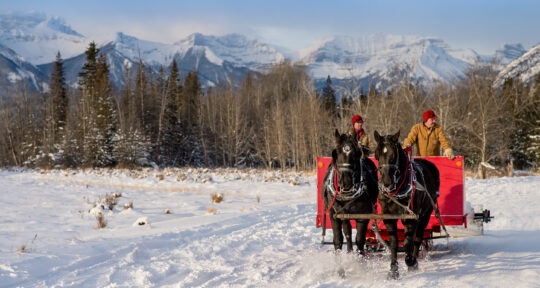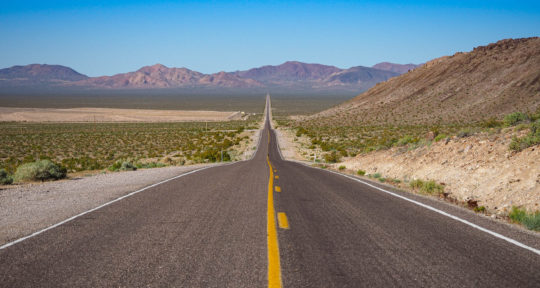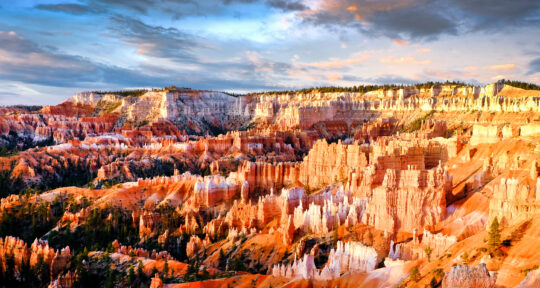Joshua Tree, California has been hit hard a few times in just the last six months. In October, heavy rains caused severe flooding and road damage, and many locals were forced to evacuate their homes. Then, the record-long government shutdown brought with it its own set of issues, including rogue visitors cutting down trees and illegally driving off-road within Joshua Tree National Park.
But now, in what feels like a vindication of sorts, both the national park and the surrounding areas have been rewarded with a spectacular display of wildflowers.
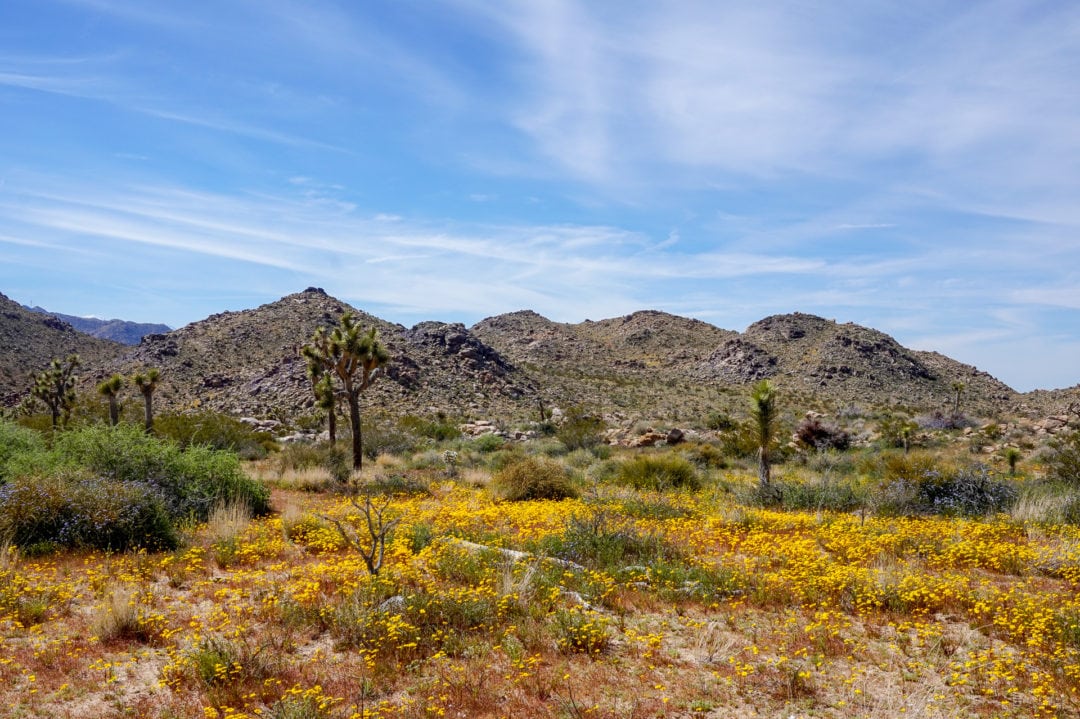
“This is one of the best blooms we’ve seen in the last couple of decades,” says Neil Frakes, vegetation manager at Joshua Tree National Park.
During a road trip through California’s deserts earlier this week, I was thrilled to see many areas blanketed in colorful wildflowers. Even the Mojave Desert—the driest desert in North America—is currently ablaze with bright yellows and purples, along with an abundance of painted lady butterflies. The flower and insect invasion is a glorious sight, and one that is highly unusual in this area.
Driving south from Death Valley, the floral display seemed to increase in intensity the closer to Joshua Tree National Park we got—reaching its crescendo within the park itself.
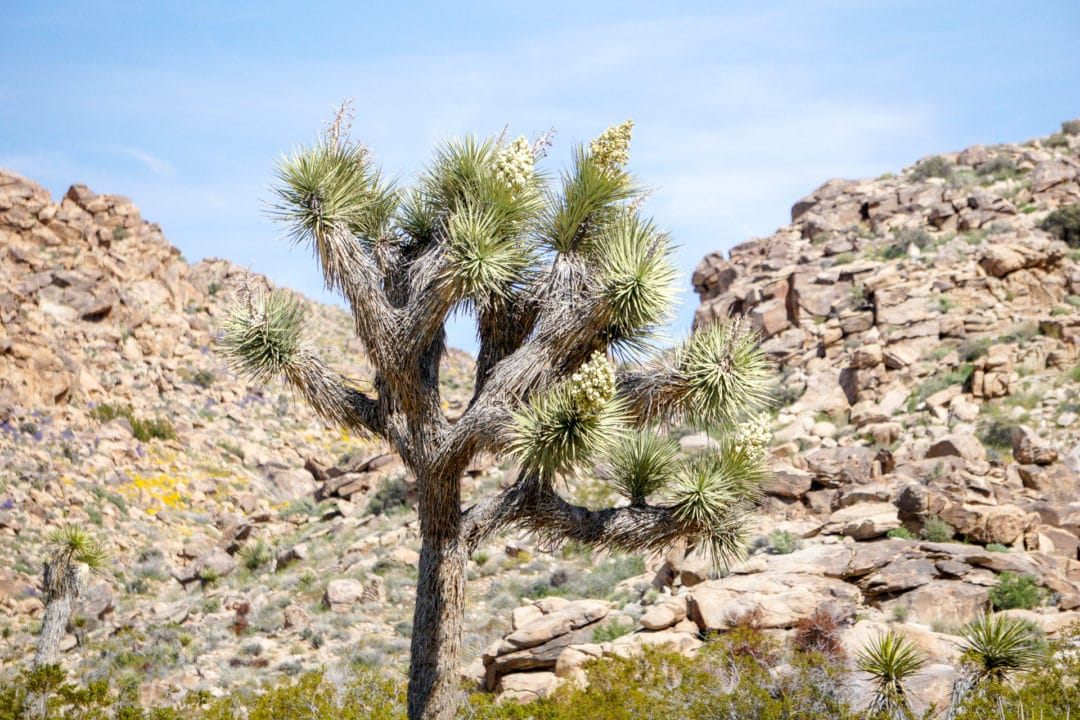
Even the park’s namesake trees are blooming, and have been since around Thanksgiving. “The Joshua trees are having a really strong bloom this year,” says Frakes. “They’re really going off right now.”
How long the bloom is expected to last varies depending on where in the park you look. “At the very lowest elevation, in the southern parts of the park, it’s already past peak,” says Frakes. “I’d say right now, it’s peaking at the lower end of the mid elevations, and at the higher elevations we ought to see a good bloom throughout the month and probably into early May.”
Following these guidelines, park visitors will be rewarded with several species of poppies, lupines, desert dandelions, Bigelow’s tickseeds, desert stars, and more, in addition to the blooming Joshua trees.
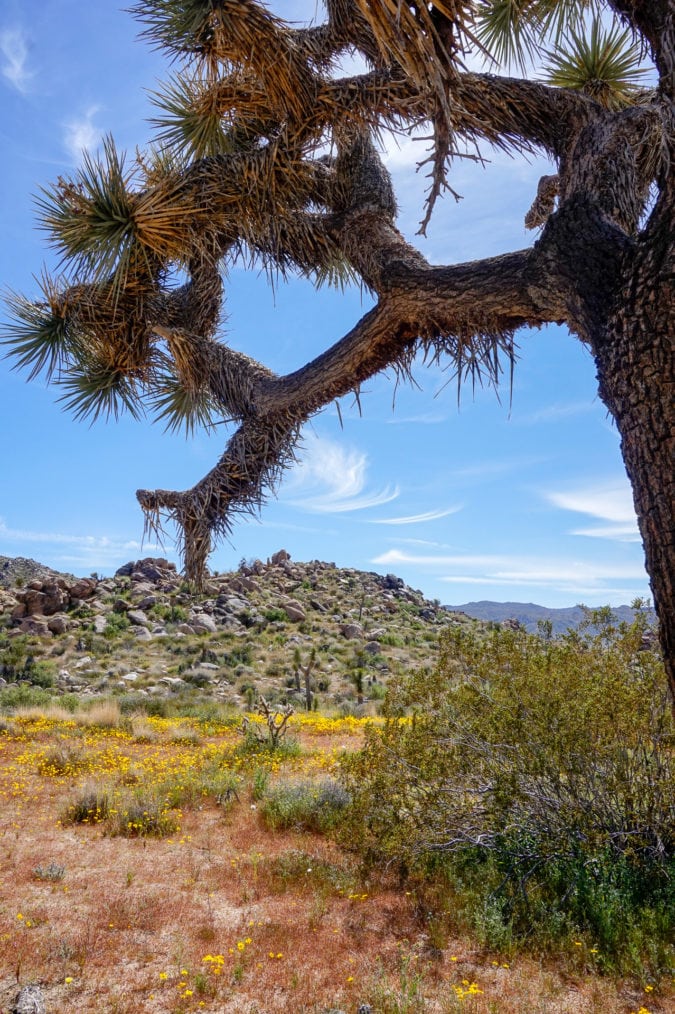
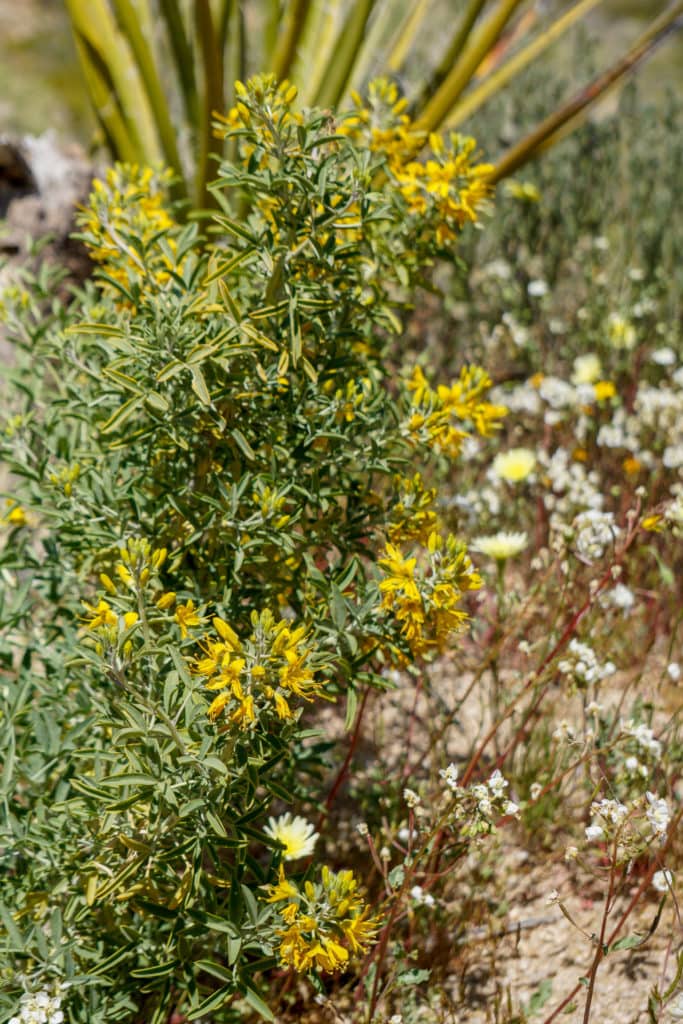
For the most part, people are being careful not to damage the flowers and the delicate ecosystem in the park. But Frakes still encourages visitors to be mindful and considerate.
“We are seeing some minor impacts to the bloom. We are seeing some trampling. I don’t think it’s anywhere near what Lake Elsinore experienced,” he says, referring to another Southern California super bloom where public access temporarily had to be shut down, in part due to people stepping on and picking the flowers.
-
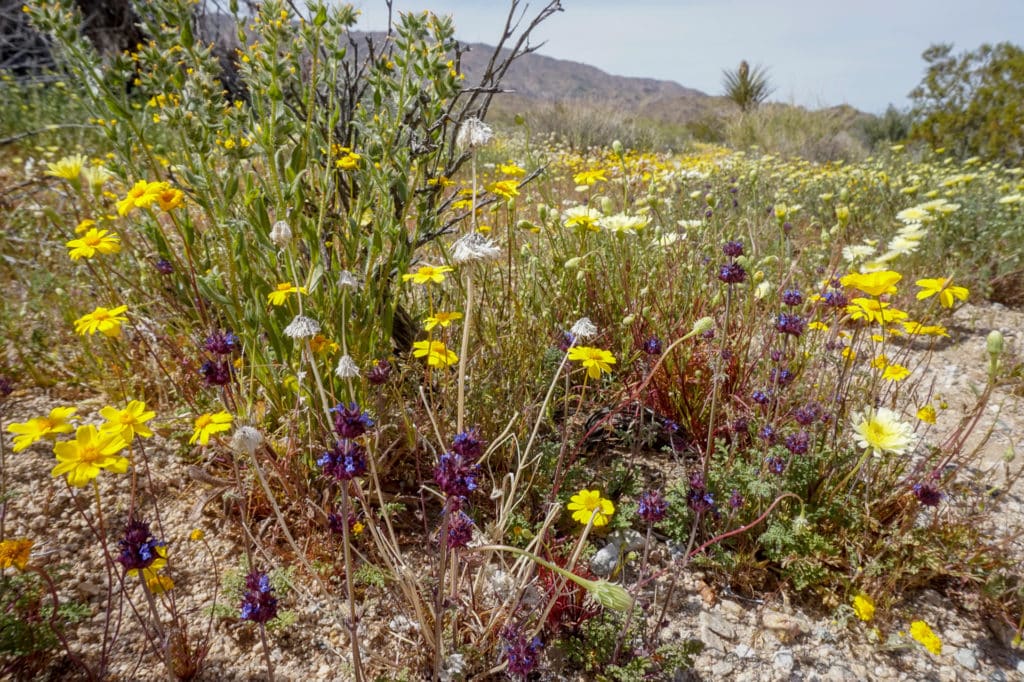
Wildflowers in Joshua Tree National Park. | Photo: Sanna Boman -
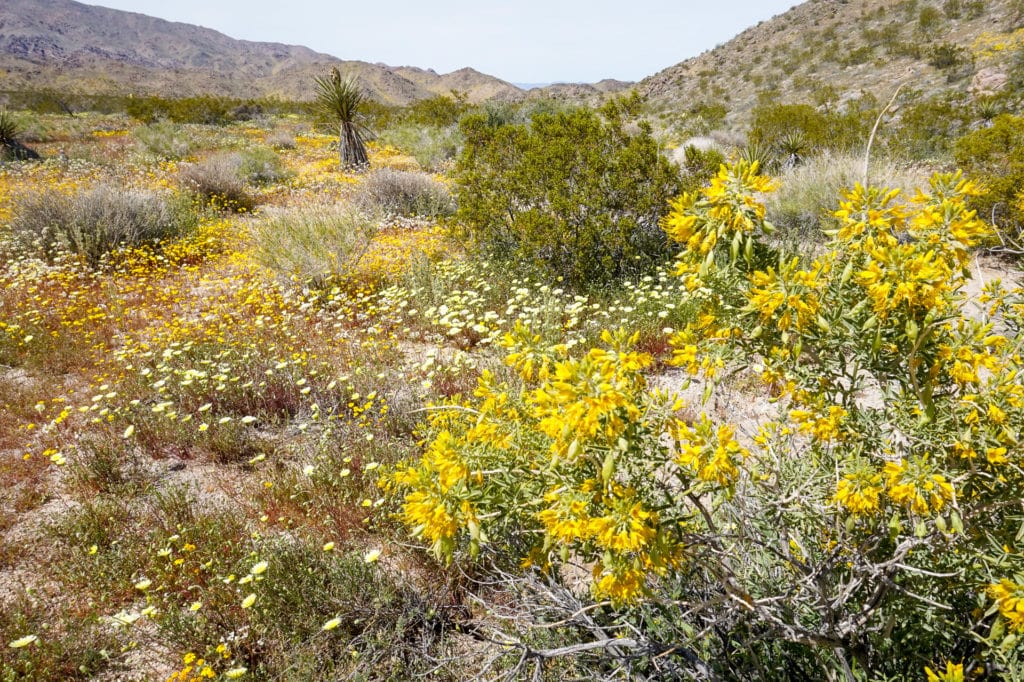
Wildflowers in Joshua Tree National Park. | Photo: Sanna Boman -
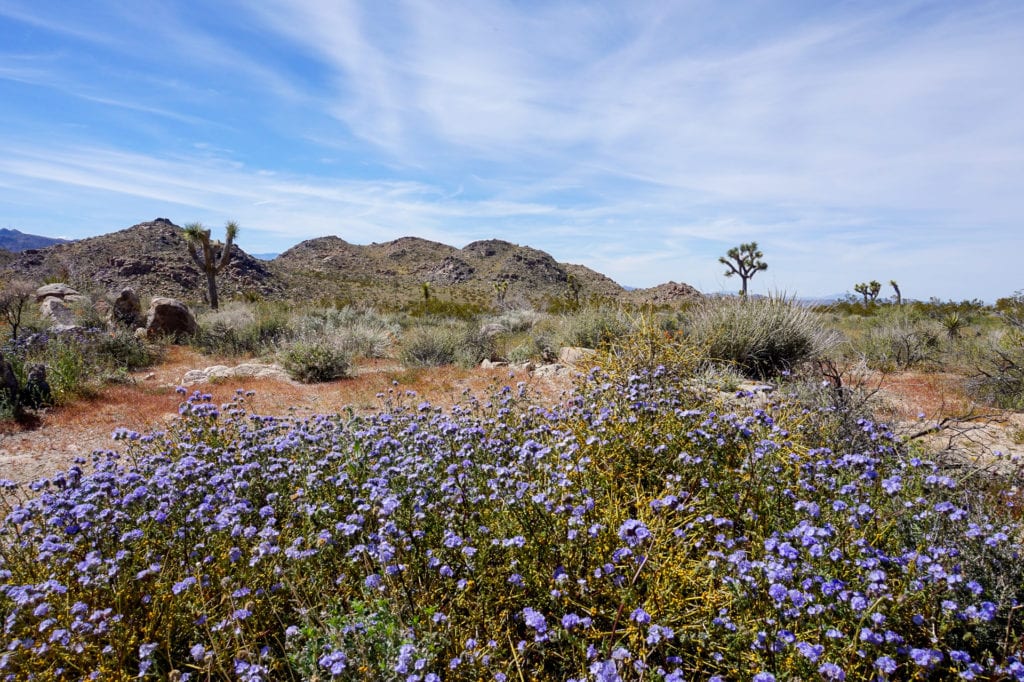
Wildflowers in Joshua Tree National Park. | Photo: Sanna Boman -
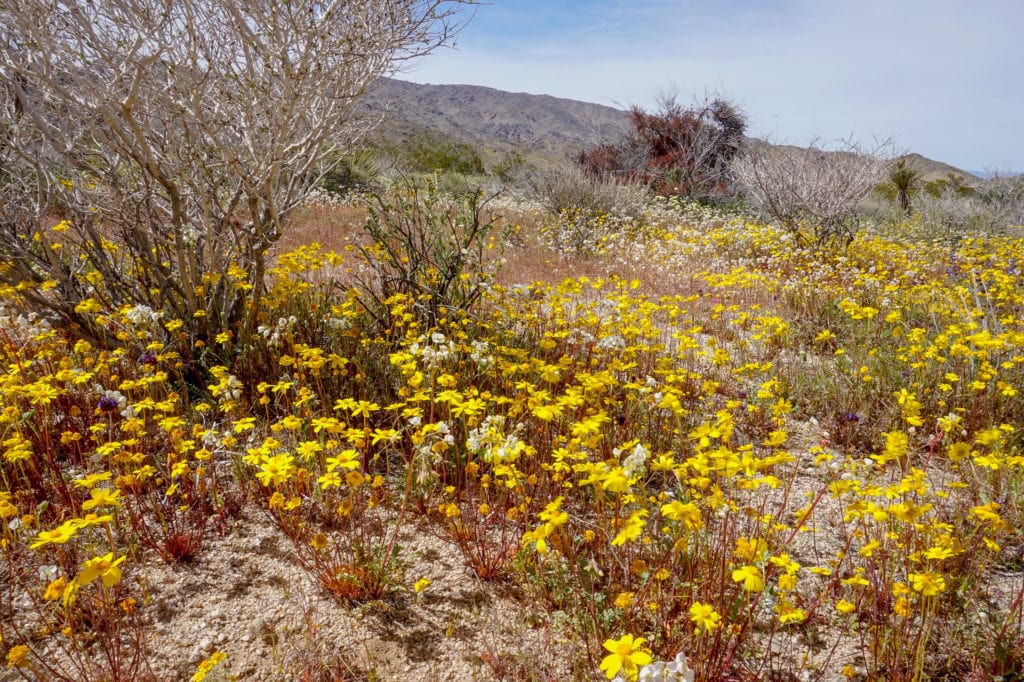
Wildflowers in Joshua Tree National Park. | Photo: Sanna Boman -
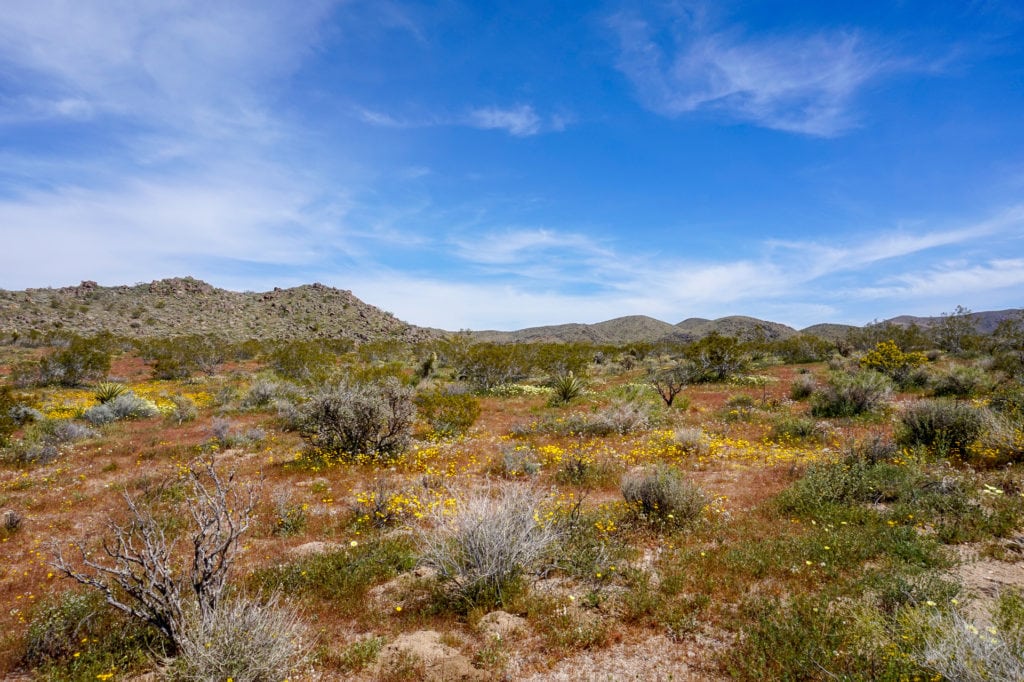
Wildflowers in Joshua Tree National Park. | Photo: Sanna Boman -
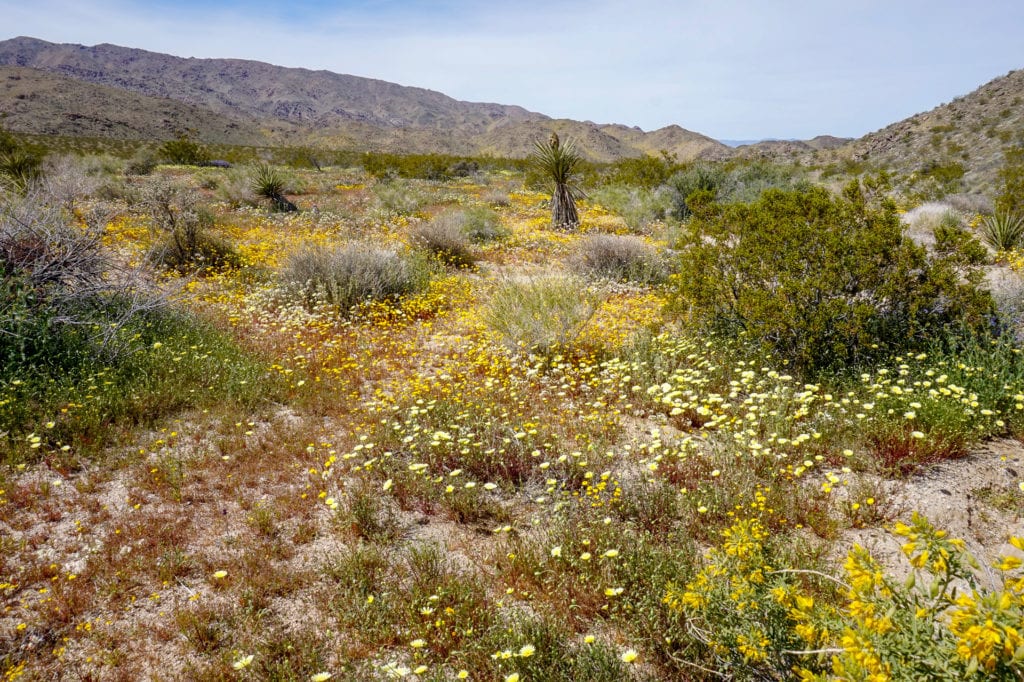
Wildflowers in Joshua Tree National Park. | Photo: Sanna Boman
If you do visit, make sure to stay on existing trails, tread lightly, and practice “leave no trace” principles. “Trampling can impact the ability of plants to reproduce,” Frakes says. “So in order to have a good bloom in other wet years in the future, it’s key to tread lightly and be really delicate.”
If you go:
Joshua Tree National Park is open 24 hours a day, year-round. The entrance fee is $30 per car or $25 per motorcycle, or free with an America the Beautiful Pass.
